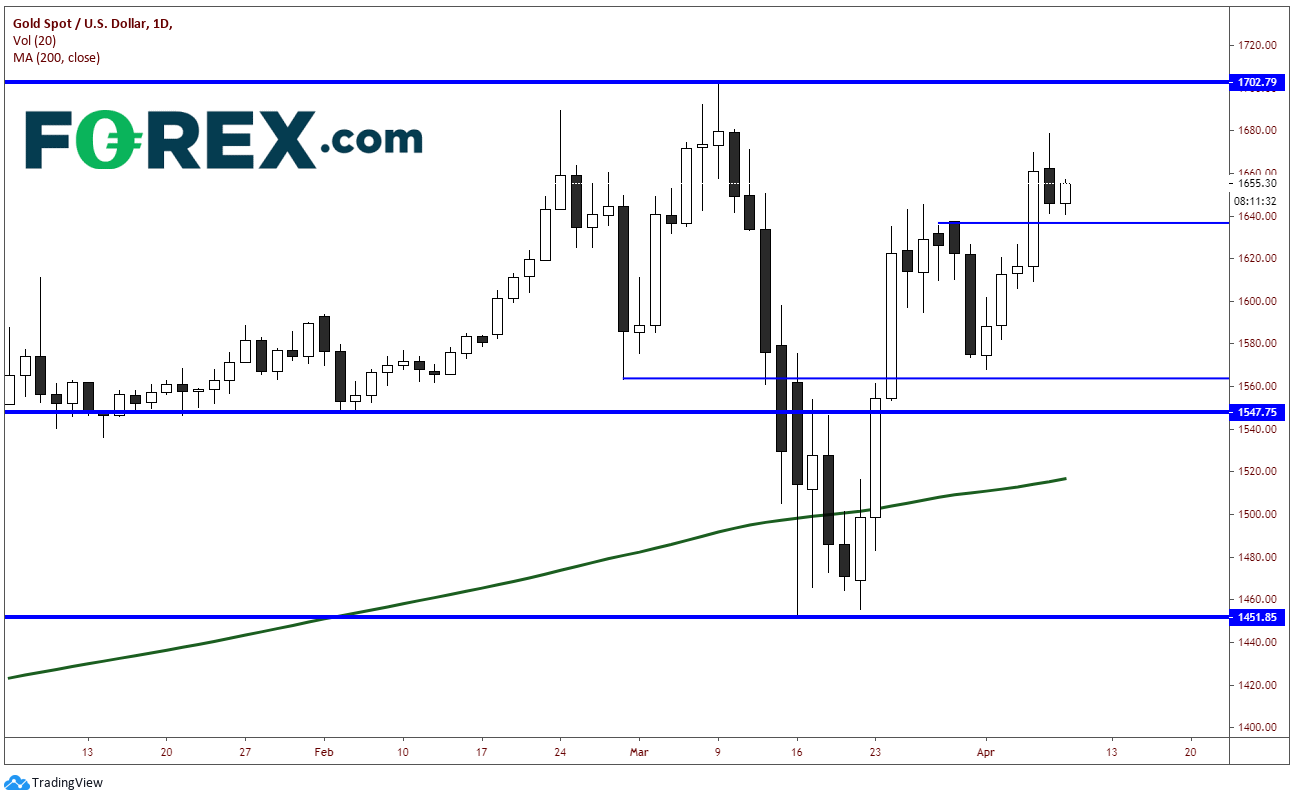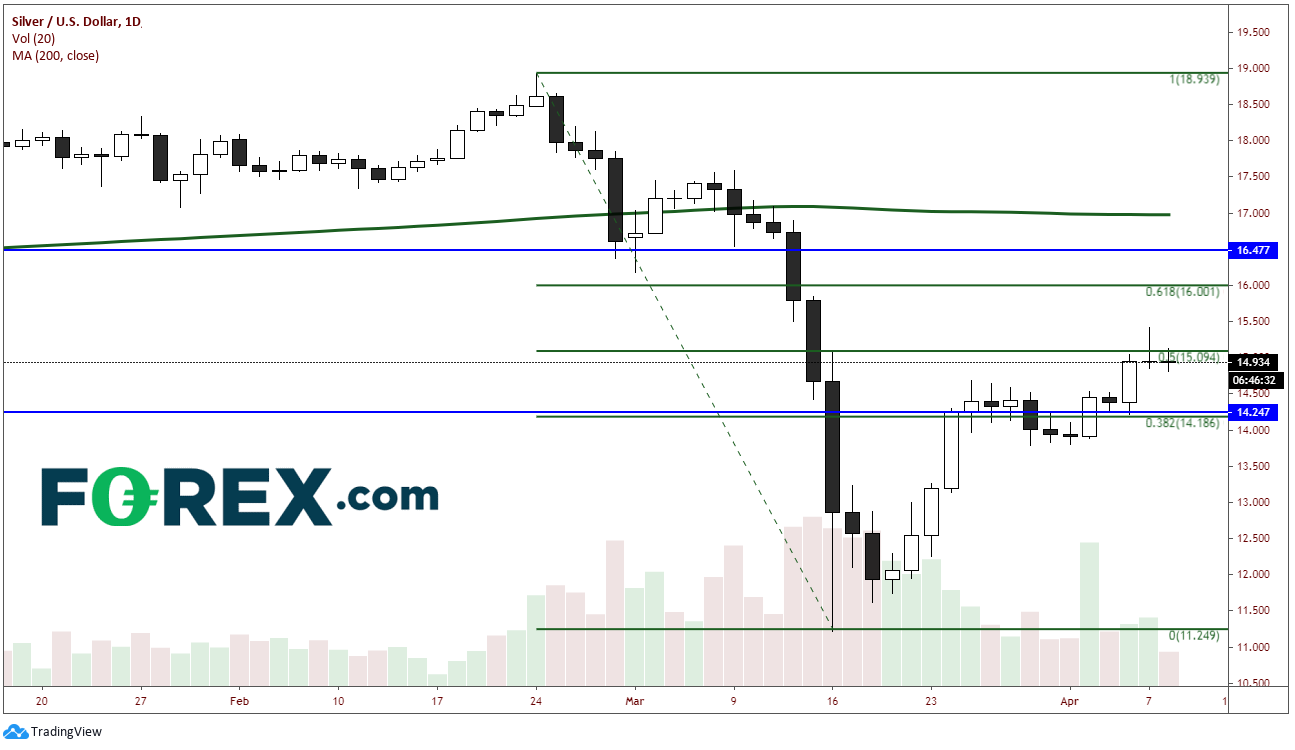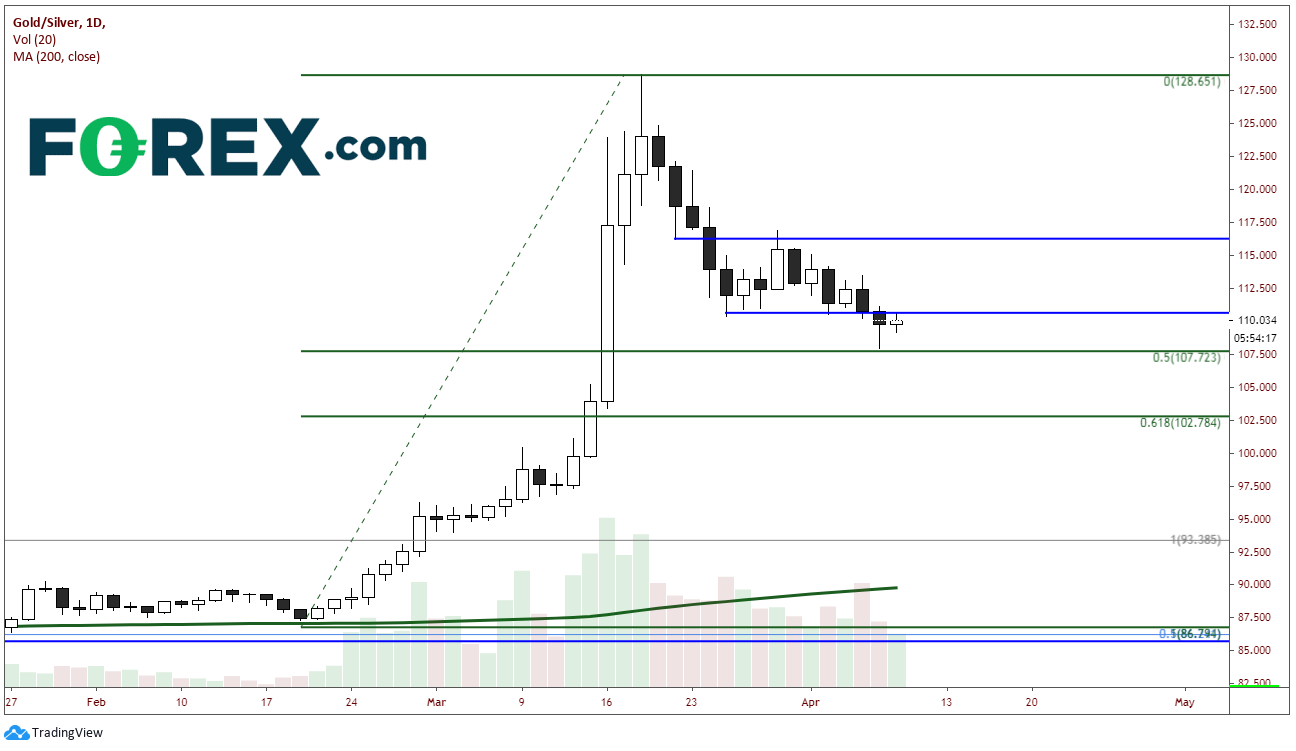The gold/silver ratio has been nearly as volatile as the individual markets, which is better?, asks Joe Perry.
It’s been quite a ride for the two precious metals since the Coronavirus outbreak began in late February. Gold, priced in dollars (XAUUSD), made a high on March 9 and for eight of the next nine trading days, traded lower, down almost 15% as gold was sold to raise cash for margin in stocks as equity markets continued to sell off.
However, as buying pressure came back on March 23, it was discovered that there was a problem in the exchange for physical (EFP) market and banks could not meet the demand for physical gold. This sent prices higher. Tuesday, gold traded within $24 of the March 9 high. Also, gold put in a bearish candle (slightly missing the true definition of a dark cloud cover, in which price would have had to have closed 50% below the prior day’s highs), however it is still within $50 from the recent high (see chart below). If there is a risk off move in the markets, this may catapult gold to new highs.

Source: Tradingview, FOREX.com
Silver has had a similar experience as gold over the last month. Silver put in a recent high on Feb. 24 at $18.929, however as gold was putting in a new high on March 9, silver could only trade back up to 50% of its Feb. 24 high to March 2 low at $17.587. The metal then proceeded to sell off 40% from its Feb. 24 high, whereas gold only sold off 15%! Silver then bounced along with gold over the course of the new two weeks. However, as gold traded back to within spitting distance of its prior high, silver could only retrace 50% of its high to low move, back to $15.09. Silver put in a gravestone doji on yesterday’s daily candlestick chart (see below). This is considered a reversal candle.

Source: Tradingview, FOREX.com
Now, let’s look at the gold/silver ratio (XAUXAG) and see which is performing better on a relative basis. From Feb. 19 to March 18, the ratio skyrocketed from 87.331 to 128.692. This is the period that silver sold off 40% while gold only sold off 15%. However, since then, the ratio has been pulling back. This is because silver has been outperforming gold on a relative basis. The ratio is currently at an inflection point, the 50% retracement level from the Feb. 19 low to the March 18 high at 107.72.
Tuesday, although the ratio broke support, the candle was a hammer, indicating a possible reversal. If the ratio breaks lower, next support is the 61.8% Fibonacci retracement level from the same time period at 102.78. However, if the ratio can close above resistance at yesterday’s highs or 111.108, gold could outperform silver and the ratio could move to next resistance at 116, then previous highs at 128.651 (see chart).

Source: Tradingview, FOREX.com
So, which is better to own right now, Gold or Silver?
The gold/silver ratio has recently pulled back 50%, therefore it may be due for a rebound. If that is the case, gold would be the better buy. However, it the ratio breaks below the 50% level, further downside may be in order, which would mean silver is the better metal to own. More evidence is probably necessary to make that decision. However regardless of which you want to own, if see we a risk off move, both should move higher.
Given the volatility and swift moves and reversals in all markets, there are spread opportunities within the precious metals complex. Based on an analysis of the gold/silver ratio, traders and investors could trader the movement in the ratio. That way, they would be trading off of an analysis of the ratio and be insulated from a larger reversal in the sector.
Joe Perry holds the Chartered Market Technician (CMT) designation and has 20 years of experience in the FX and commodities arenas. Perry uses a combination of technical, macro, and fundamental analysis to provide market insights. He traded spot market FX and commodity futures for 17 years at SAC Capital Advisors and Point 72 Asset Management. Don’t forget that you can now follow Forex.com’s research team on Twitter: http://twitter.com/FOREXcom and you can find more of FOREX.com’s research at https://www.forex.com/en-us/market-analysis/latest-research/.





















